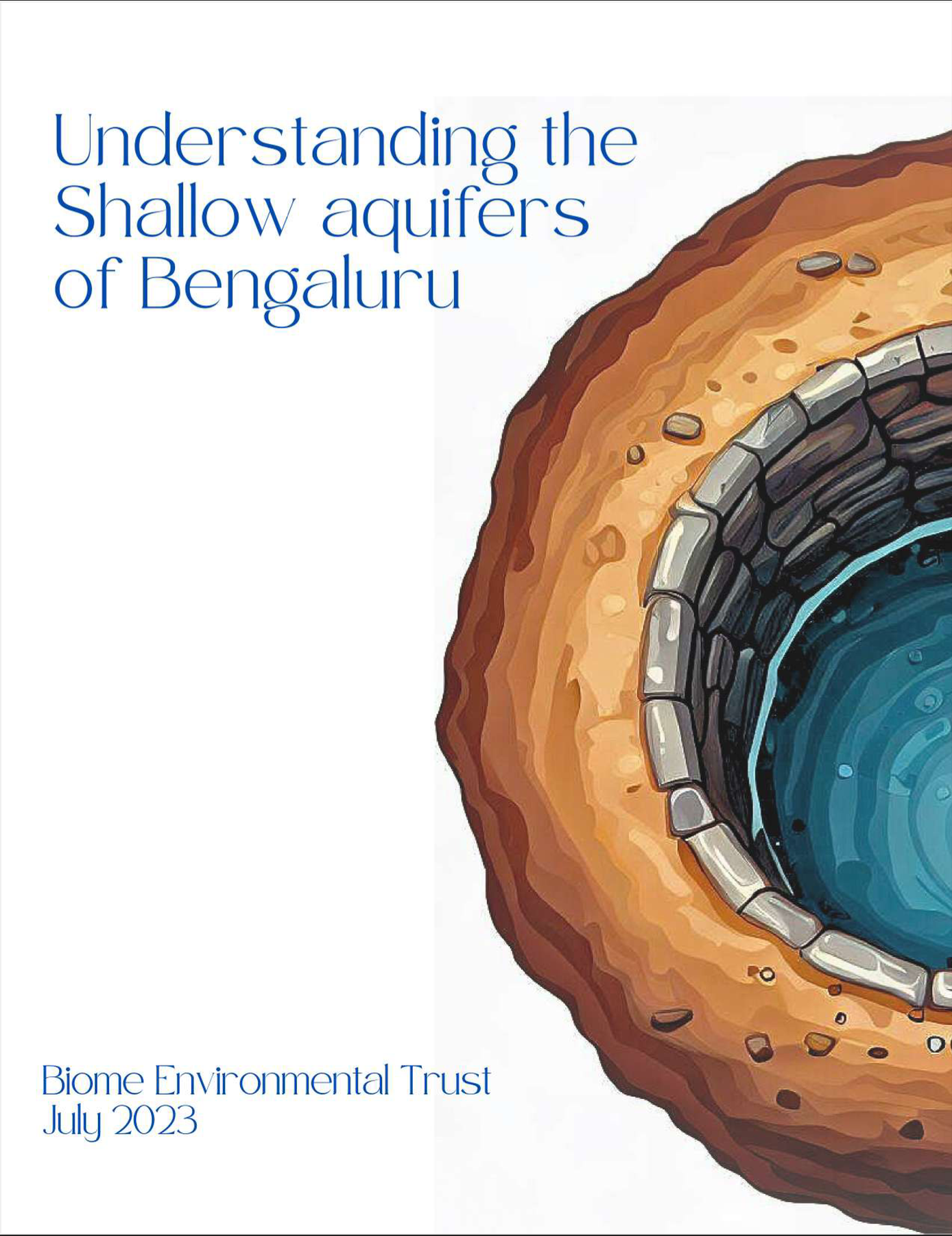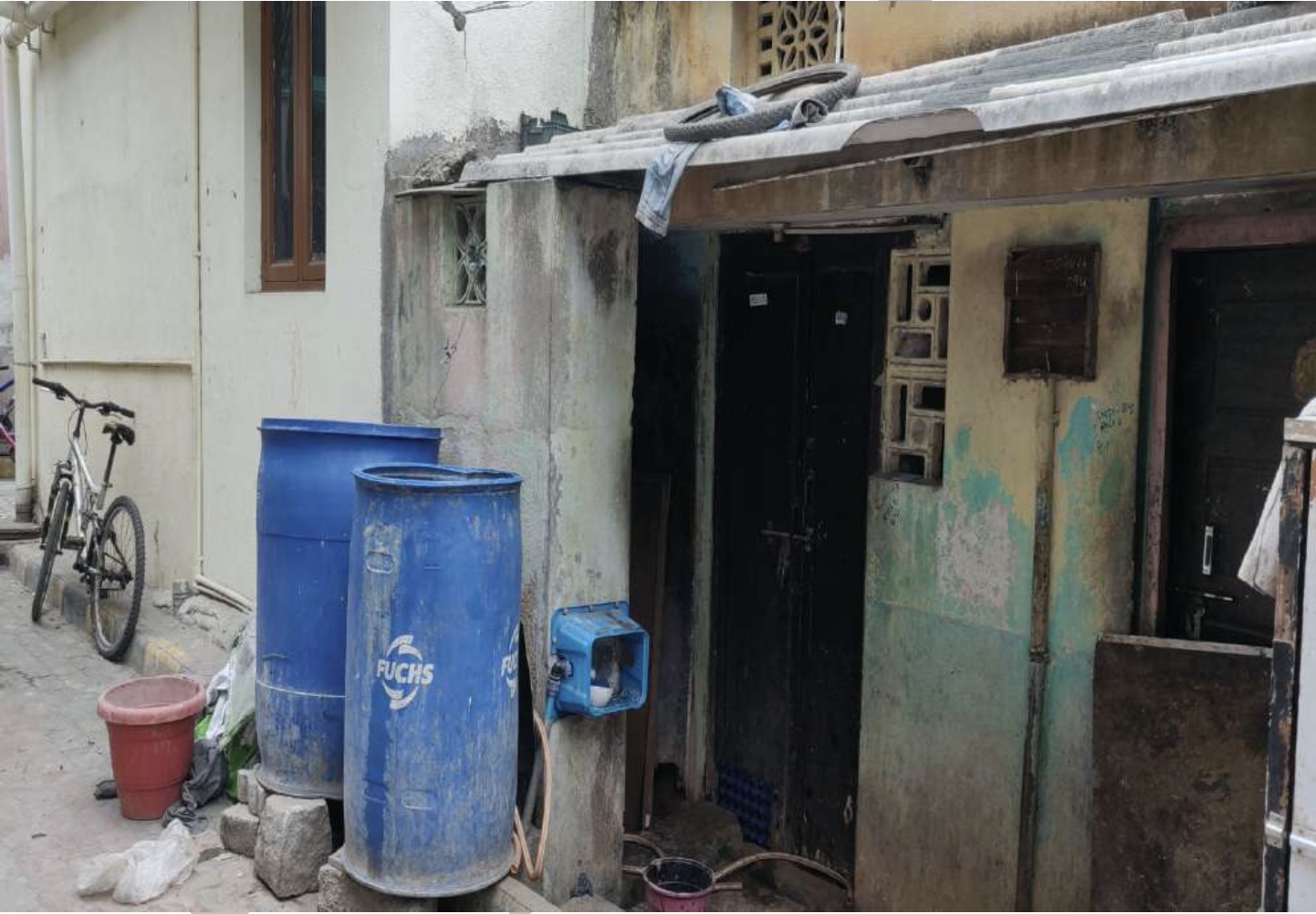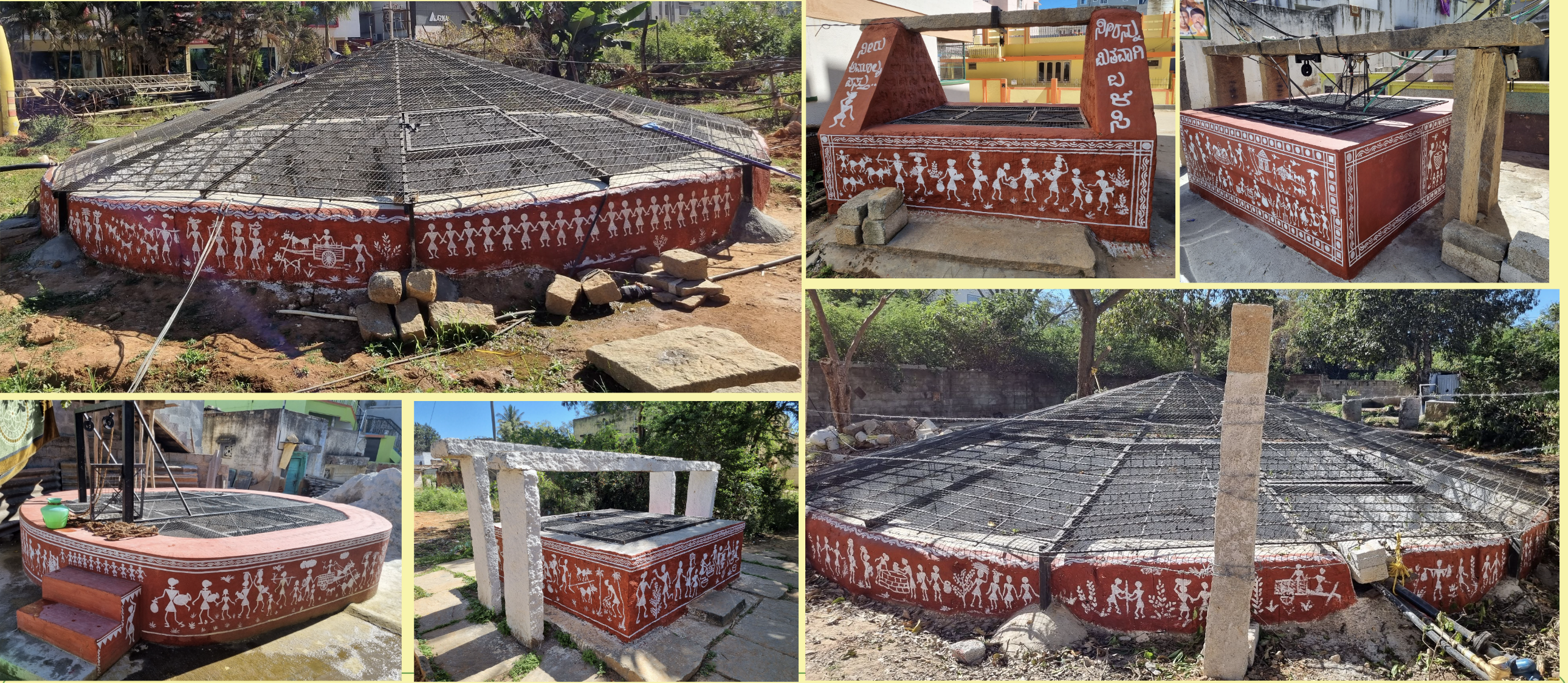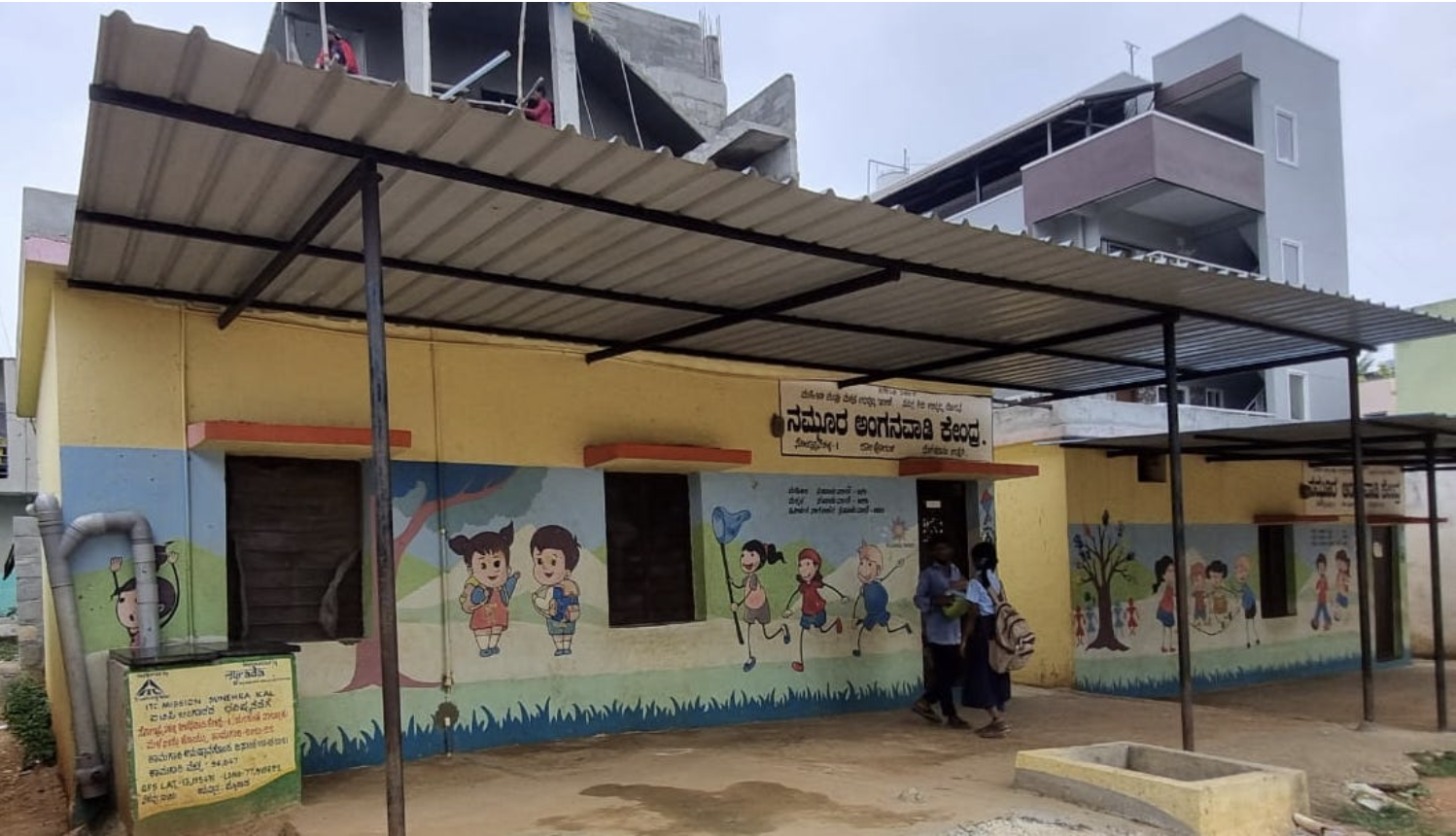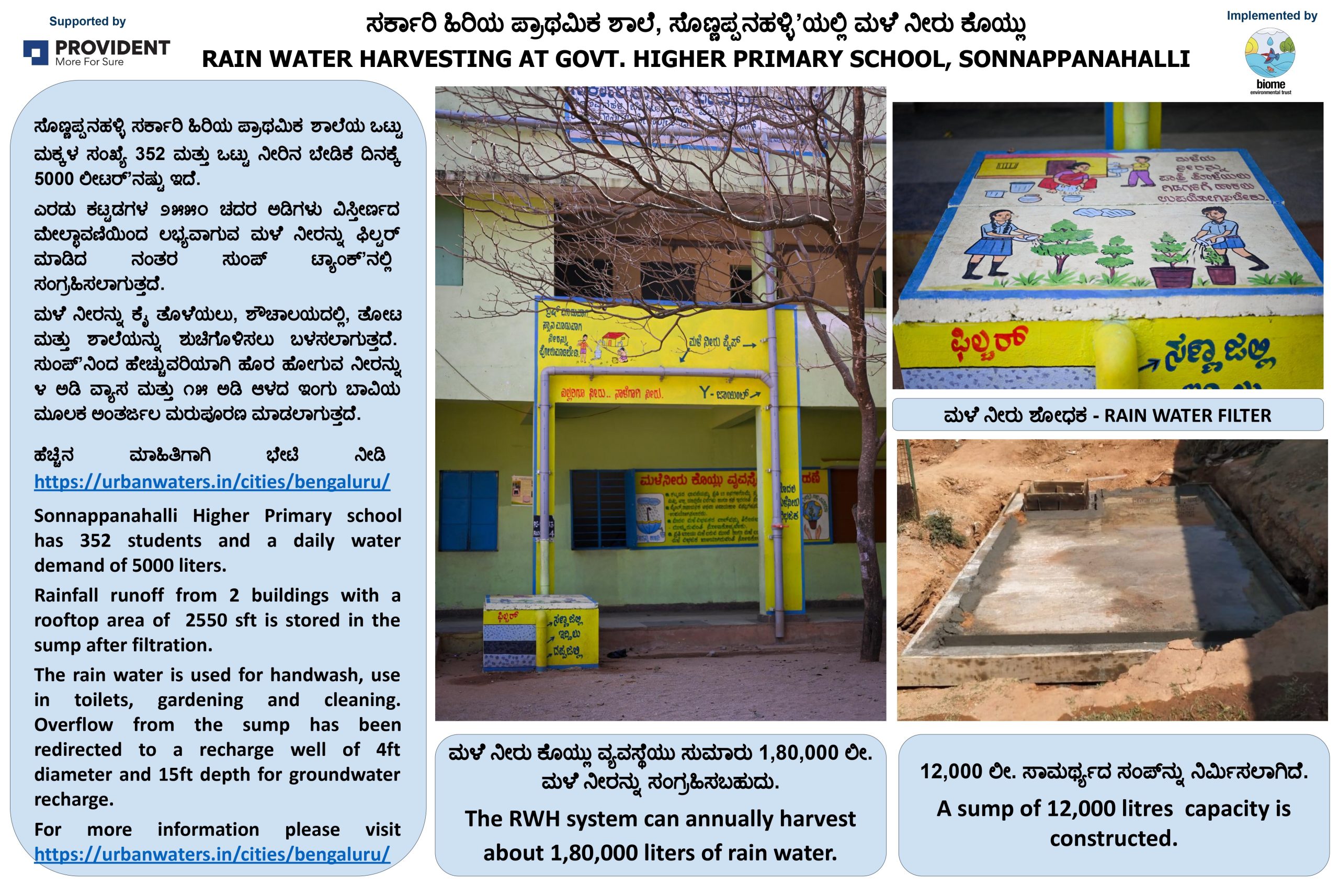Rainwater Harvesting 3: How to recharge groundwater
Table of contents
- Introduction
- Filtration
- Constructing a Recharge Well
- Constructing a recharge well inside a storm water drain (SWD)
- Wells diggers and their livelihoods
- Maintenance, Tips and Precautions
- Cost
Introduction
Recharge through recharge wells can serve two very important purposes: first to control and mitigate flooding and secondly to help ensure rainwater percolates into groundwater. Groundwater recharge can be achieved through multiple “artificial recharge structures” such as recharge wells, direct borewell recharge, check dams (found in the rural context) etc. However this guide will focus on the “recharge well” as it is most appropriate in the urban context, consumes little real estate and can be retrofitted or integrated into real estate development. Further, the recharge well is very suited to the geology of Bengaluru.
The main components of a rainwater harvesting system for groundwater recharge are:
- Catchment: The rainwater collection area is any paved or unpaved surface, such as rooftop, plot (garden, driveway etc). Catchments for recharge need not be “super clean” – since the water is getting recharged and the earth acts as a filter as it percolates into the ground. Therefore, garden areas, paved areas, farmland and rooftops are appropriate catchments. Catchments with chemical contamination however should be avoided. Gardens and farmlands should be conscious about the use of fertilisers and pesticides.
- Conveyance: In the case of rooftops, downpipes or gutters carry rainwater. In the case of plots, channels/pipes in the ground carry water.In layouts / campuses / large apartments storm water drains carry runoff from different catchments of the landuse (Eg: parks, roads, other paved areas, gardens and excess rooftop runoffs). Storm water drains therefore are a very important conveyance mechanism for recharge.
- Filtration
- Recharge well
Recharge wells can be retrofitted/integrated into real estate development in multiple ways.For any catchment, the type and number of recharge wells can be determined based on the catchment area, rate of rainwater runoff and infiltration into the soil. Also, topography of the plot should be studied to locate valley points since they get the highest amount of rainwater runoff and hence are ideal locations for recharge wells.However when flooding in valleys is a problem, recharge wells can be integrated from the ridge down to the valley. You can consult an RWH expert for advice on where to situate your wells.


For RWH systems that have both storage and recharge components, refer to this guide on building a direct use RWH (Rain Water Harvesting) system, i.e., the system for storage and direct use of water. If there is overflow from the storage barrel or sump in a Direct Use RWHM, you can channel it for recharge. Overflowing water, along with rainwater falling in your plot, can be channeled for groundwater recharge.
Filtration
The recharge well takes water down to the permeable zone which is made up of weathered rock. Here the earth itself acts as filter and fine filtration is not required. Filtration is required only to remove larger debris + silt (which will silt up the recharge well). The design of the filter therefore depends on the catchment and what kind of debris get captured from the catchment. In case of gardens / farmland, silt & leaf debris may need to be controlled. In paved areas, solid waste like plastic packets are important forms of debris that need to be controlled. An in-drain filter – normally a grating/concrete jaali – for large debris along with a silt trap can be an effective solution. For recharge wells connected to clean rooftop areas or that capture overflow from tanks / sumps, filtration is not necessary.

For recharge wells connected to clean rooftop areas or overflow from tanks / sumps, filtration is not necessary.
Constructing a Recharge Well
Construction of a recharge well is far simpler than that of a conventional open well. This video explains how a recharge well is built. Recharge wells could be of varying sizes. A typical well of 3 ft diameter and 20 ft depth can hold 4000 litres of water. This water will take about two days to percolate down in sandy soil.
Activities involved in digging a recharge well include:
- Soil excavation: That is, manually digging the well to the desired depth. Digging is stopped upon touching the water table. Well digging could be hindered by encountering hard rock, or water seepage from the side walls of the well. In case of seepage, digging can be continued after manually removing or pumping out the water. Since seepage can causes the collapse of side walls, work should be continued after ensuring workers’ safety.
- Dumping of excavated soil: Be prepared – this is difficult and expensive especially in the core areas of cities as there is no demand for this soil. Soil upto the depth of five feet is suitable only for filling, and not farming. You should try to identify a nearby location for dumping soil, but it may still cost money.
- Buying, transporting and placing RCC rings inside the well: Once well digging is stopped, RCC rings are placed one above the other, inside the well. External diameter of the RCC rings should be 6-8 inches lesser than the diameter of the well. The space between the rings is not plastered, and the bottom of the well is left unlined, which allows well water to seep out from all sides.
- Filling the gap between the RCC rings and the well: This gap should be filled tightly with jelly measuring about 80 mm, after the placing of every two RCC rings. This is to ensure that walls of the well does not collapse.
- Covering the well with manhole: The mouth of the well should be covered with a good quality grilled or perforated RCC slab, to prevent accidents. Manholes can be fixed on the RCC slab to provide access to the well for maintenance. Inflow and outflow of rainwater in the well can also be observed through peepholes that can be provided on the slab. You can also have a safety grill placed 2-3 feet below the slab, to ensure safety in case the slab gives away.
Standard Sizes:
| Well Size | Capacity |
| 3ft diamter and 20ft deep | 4000 litres |
| 4ft diamter and 25ft deep | 8000 |
| 5ft diamter and 30ft deep | 16,000 |
| 6ft diamter and 40ft deep | 32,000 litres |
Constructing a recharge well inside a storm water drain (SWD)
Recharge wells can be constructed inside stormwater drains. In these structures, the components are similar. In the SWD, before water enters the recharge well, there is a small trench which serves as the de-silting chamber. Then comes a concrete grate to trap solid waste, followed by a bed of stones and a low concrete wall to further filter out silt. The concrete wall, called a check dam, has flow pipes at the top to carry water to the recharge well. The mouths of these pipes are covered with netlon mesh to prevent any remaining solid waste from entering the recharge well. The recharge well should be covered with an RCC slab. In case of too much rain, an overflow pipe on the other side of the recharge well carries away the excess water. Recharge wells inside SWD ensure that hardly any real estate is wasted for the structure.
Wells diggers and their livelihoods
Traditionally there has been an entire community of well diggers called “mannu waddars”. With the decline of open wells and fall of water tables, they have been losing their livelihoods. However when we construct recharge wells in our cities, we make their skills and knowledge relevant again and they become a critical part of the new “green economy” we need to develop. Watch their skills at work. Here are a few who could help you dig your recharge well.

Maintenance, Tips and Precautions
- Before digging the recharge well, ensure there is no ‘soak away’ pit or toilet pit nearby. The well should be at least 20 feet away from the pit.
- Recharge well should be as far as possible from the foundation of the house. It should be at least as far from the foundation as the depth of the foundation – this is only a thumb rule.
- Recharge well should be dug as close as possible to any existing borewell.
- If your building/house has a basement, the recharge well could lead to seepage in the basement – though that’s not necessarily true in all cases. Locating the recharge well appropriately so as to get water to it without leading to basement seepage is important in this context. Do consult an expert on how to achieve recharge without leading to seepage problems.
- Avoid digging recharge well in areas where hard rock is very close to the surface – recharge rates are normally lower in rocky areas. You may need to dig more wells to ensure that groundwater recharge of appropriate quantity happens.
- Sometimes while digging you may encounter hard rock. In these conditions the well digger will not be able to dig further.
- Ensure that no power cable or sewage pipe passes close the recharge well.
- Catchment should be clean and pollution-free, whether it is the rooftop, plot or storm water drain.
- There should be no sanitary leakage into the SWD. Else this water would enter the recharge well.
-
- During rain, there should be rainwater in sufficient quantities in the SWD
- De-silt the recharge well every five years
- Regularly monitor water levels and quality.
Cost
Since a recharge well is not a standardised product, each well digger will have his own vision of the well, and hence costs are bound to vary. An experienced digger usually quotes so as to cover the cost upto a minimum depth. As of early 2017, digging a recharge well of 3ft diameter and 20ft depth costs Rs 25,000-35,000. The costs then vary depending on the diameter and depth. Construction of one well takes only couple of days.
Costs vary based on these factors:
- Size of the plot: Costs can be slightly higher for bigger plots
- Depth of well: Costs increase as depth increases
- Design and quality of components




